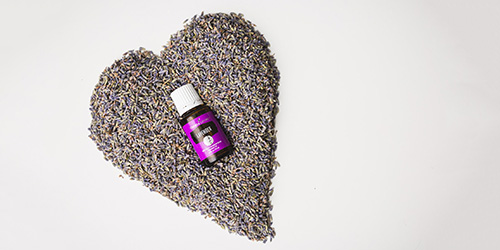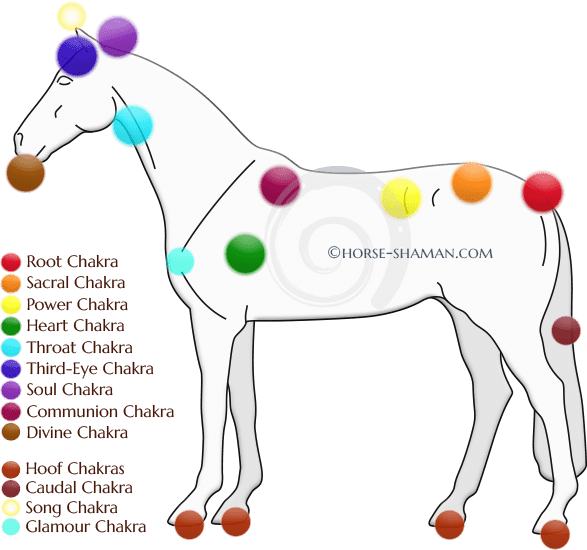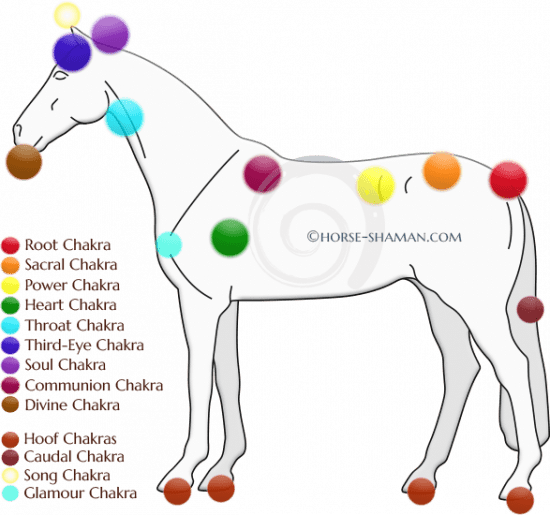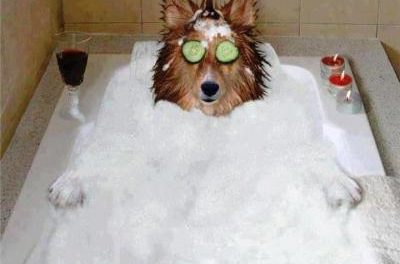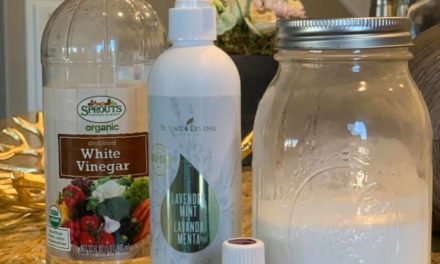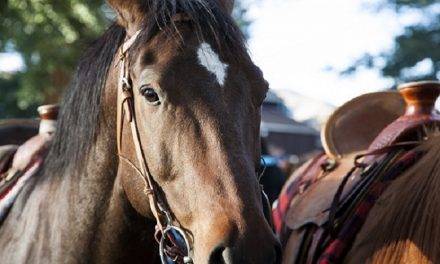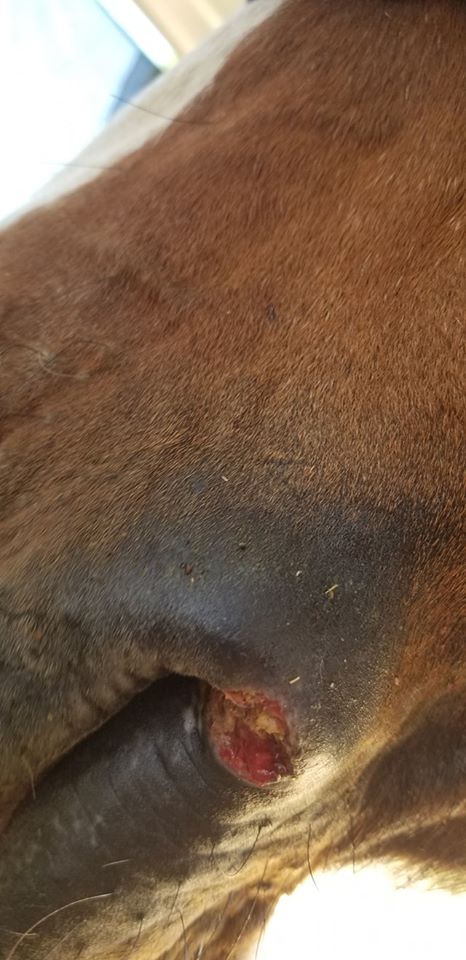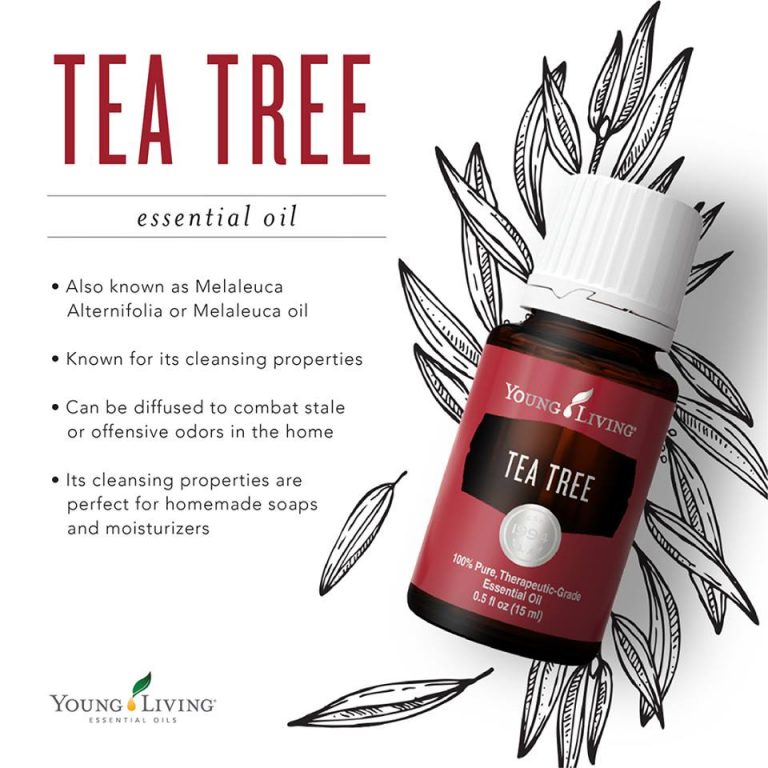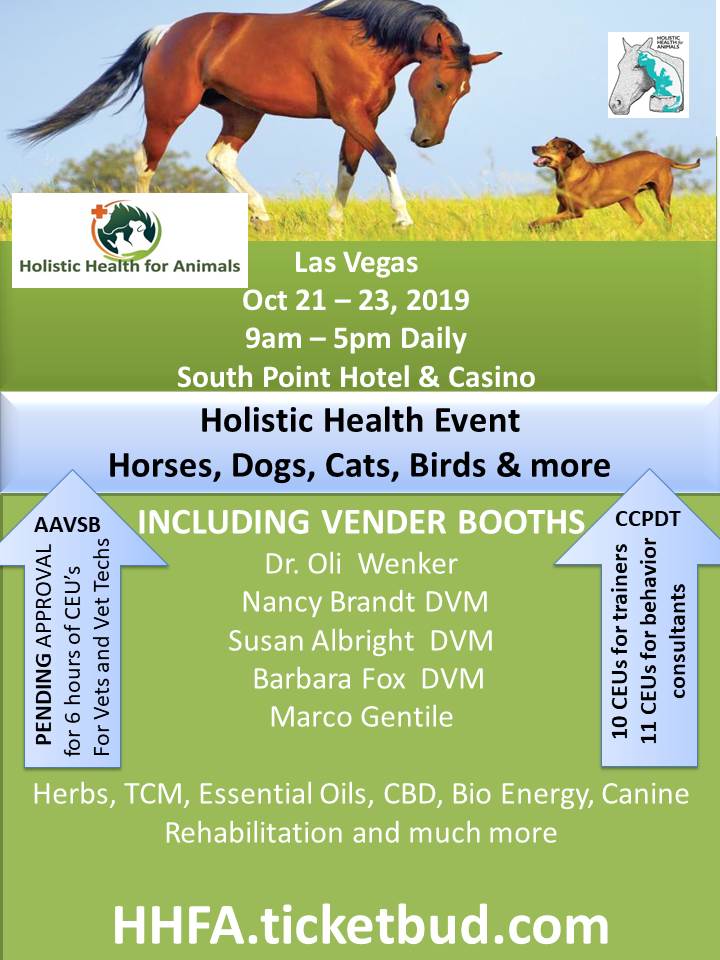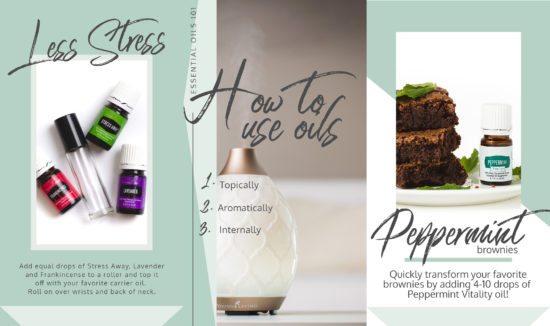Equine Chakras: Part 2
 Reposted on Jan.3rd 2019 by https://oily.life/katscorneressentiallysimple
Reposted on Jan.3rd 2019 by https://oily.life/katscorneressentiallysimple
Getting to the Root of Pain & Behavioral Problems in Horses
Part 2: The Higher Chakras
The first, second, and third chakras in horses and humans are considered to be the “lower” chakras, which deal with more primitive, fundamental aspects like safety, reproduction, and strength. You can learn about the horse’s lower chakras in Part 1 of this series. This chapter addresses the higher chakras, #4-7. The higher chakras traditionally balance our higher aspects, like intelligence, intuition, and spirituality. The heart chakra, which is the emotional center, is considered a higher chakra. However, it holds a unique role as the union between the higher and lower elements of our being. When we shift out of lower energies like fear or disempowerment and into our heart space, we are available to our compassion, knowing, and guidance. Severe imbalances in the lower chakras prevent us from making that shift into our higher aspects, and the same is true for horses. To access their greatest gifts, passion, brilliance, and connection, the entire energetic system must be healthy.
4. Heart Chakra
LOCATION: Behind the center of the chest, between the shoulders
ENERGETIC SIGNIFICANCE: The heart chakra is the horse’s emotional center. The individual’s ability to love and be loved, for/from self and others, falls in this domain, along with emotional sensitivity. The heart chakra allows the emotional bond between horse and rider. The quality of that connection is balanced in this energy center. The heart center allows the horse to breathe in and out universal love as well, instilling a sense of calmness, peace, and wellbeing when in balance. This is the heartfelt attraction and calm we often feel that draws us to the presence of the horse.
AREAS OF THE HORSE: Heart, lungs, shoulders, elbows, girth, forearm, chest.
COMMON CAUSES OF BLOCKAGES: Disconnection between horse and rider, extreme emotional responses from a rider/handler, being punished for not understanding human requests, condemnation for pain-driven behavior, insults and derogatory behavior toward the horse, being labelled a “bad” horse or a jerk, abusive behavior from a human who claims to love the horse, unpredictable emotions in rider/handler, loss of a loved one (horse or human), feeling misunderstood, feeling unwanted, emotional wounding.
PHYSICAL IMBALANCES: Contracted chest (shoulder joints narrowed, scapula sucked inward out of alignment, etc), shoulder or elbow issues, EIPH (exercise-induced pulmonary hemorrhage) aka “bleeders,” heart irregularities or conditions, lung conditions, heaves, inability to connect or trust emotionally, dangerous emotional reactions, rearing or crow hopping.*
RECOMMENDATIONS: Most horses like the idea of partnering with people, and they look forward to establishing an emotional relationship. Creating and fostering this relationship in healthy, positive, affirming ways may help rebalance a horse with a damaged or contracted heart chakra. Celebrating the horse’s personality and character and loving him or her for who s/he is will begin to turn the horse’s attention to positive associations of self and others. Listening to the horse with love, compassion, and understanding – Seeing and Hearing them – creates a balanced connection and heart space for both parties.
Riding can be a shared, joyful activity, but real friendship is built on shared joy in togetherness. When riding is the entirety of the relationship, the experience for the horse is similar to when people only befriend us to enjoy our car, cooking, or other generosities. Forming a true bond, a relationship that extends beyond riding activities into friendship, helps to restore the heart of a horse (and human). It is the relationship most horses wish to enjoy with their human friends.
From a management perspective, maintaining our own emotional balance is essential to maintaining the balance of our equine friends. The best riders and handlers for a horse with a heart chakra imbalance are those who remain calm, peaceful, loving, and centered around the animal. These people are equally connected under saddle and on the ground, which creates a stable and soothing environment for the horse to open up and form a bond.
5. Throat Chakra
LOCATION: Base of throat latch
ENERGETIC SIGNIFICANCE: The throat chakra is the energy center of inner knowing and living the individual’s truth. It is the psychic seat, the connection to the intuitive self. Fiona describes this energy center as that which helps horses “know how to be a horse.” The throat chakra is the source where all knowledge comes through, so horses use this energy to access information about all areas of equine life – finding food, knowing where to go, how to graze, how to interact with other horses, understanding things riders ask. When out of balance in this energy center, horses disconnect from their intuitive knowing of how to express themselves in the world.
AREAS OF THE HORSE: Throat latch, esophagus, neck, jaw, mouth, teeth, tongue, hyoid bone, thyroid, parotid glands, cervical spine (except first and second vertebrae), nuchal ligament.
COMMON CAUSES OF BLOCKAGES: Being kept in very unnatural environments, lack of opportunity to graze, frequent trailering and travel (especially with head elevated), prolonged time on the show circuit without breaks to recharge, being trained out of naturally correct body posture, overuse of bit, bits that are too large or uncomfortable, riding in an unnatural frame (hollow, “broken at the third vertebrae”), throat latch forced closed or compressed (chin to chest or behind the vertical), rein gadgets force posture of any sort, anything that prevents a horse from “being a horse.”
PHYSICAL IMBALANCES: Jaw or TMJ issues, tooth afflictions, thyroid conditions, blocked or swollen parotid glands, busy mouth or sticking out the tongue, nuchal ligament injuries, hyoid bone misalignment or fractures, anhidrosis, sinus conditions, stunted gaits, hollow or inverted way of going, learned helplessness, choke, esophageal conditions, neck pain or arthritis, ewe neck, rearing or crow hopping.*
RECOMMENDATIONS: Horses with throat chakra imbalances benefit from restoring their innate equine selves which have been lost to their riding careers. They may not do well initially with turnout or relating to other horses in certain ways, but creating the space for them to “just be a horse” is necessary to restore balance. Regular time off from competition and arena work is essential to maintain balance in this energy center. Proactive bodywork and veterinary management are vital, particularly for the teeth, jaw, and neck. Check for hyoid bone issues (between jaw bones/mandibles), as this hidden area is frequently out of alignment.
Much of the rebalancing of this energy center comes from retraining the horse through correct riding built on a foundation of stretching and relaxation. The horse’s throat latch must remain open and relaxed at all times, which is not only correct from a judging and physiological perspective, but also ensures that the bit is not used to coerce the horse or create a false frame. Closing the throat latch by using the hands to create a frame inhibits the horse’s natural movement and causes concussion on the spine and stress on the nuchal ligament, leading to problems down the road. Use mild, well-fitting bits which are comfortable for the horse and soft hands on the reins.
Horses who have a healthy throat chakra move naturally with poll-high self-carriage and a lifted back. Think of how, when a stallion (or silly gelding) sees a mare in heat, his whole body seems to get taller and he displays extravagant paces while he seeks her attention. His head is up but not tucked in, as if he is lifted by the ears and withers, and he uses his whole body to be as impressive as possible. This open, full-body movement is different than collection, which comes later with strength and training as the horse shifts his or her weight to the hind end. Preserving or restoring the horse to this correct balance creates soundness in mind and body.
6. Third Eye Chakra
LOCATION: Primary whorl on the horse’s forehead
OTHER NAMES: Brow chakra
ENERGETIC SIGNIFICANCE: This is the energy center on the horse where he or she is able to access a higher level of consciousness. Horses use this chakra for larger soul purpose questions, but not the way humans might do with a conscious mind. For horses, this energy center thrives when the horse is in the right place at the right time, letting the horse relax and participate in life in a healthy and positive way. The message from the soul’s guidance is clear: here’s where you need to be. This energy center may activate to show an energetic match with a particular person or other horse, which is why some horse and rider pairs seem to do well despite their flaws. This energy center is also how horses translate energy into sight. Horses see somewhat differently than people do, and a good portion of their sight is made up of the energetic fields of those around them, not just physical objects. This combined sight is why horses sometimes spook at “nothing,” because they have witnessed an energetic shift or disturbance that humans cannot see. Horses are capable of seeing how other beings energetically relate to their environment, which is vital to animals in the wild because they can spot disease and trouble very easily. For domesticated horses, this energy center helps identify similar threats, but may acclimate the horse to negative energies and block their natural instinct of wellbeing if they are exposed to nothing else.
AREAS OF THE HORSE: Forehead, eyes, inner ears, brain, pituitary gland.
COMMON CAUSES OF BLOCKAGES: Being constantly surrounded by negative and low energies from people or environment, people who are out of balance around horses, being forced to work with unstable or toxic people, feeling out of place and unable to acclimate, not belonging in circumstances or environment.
PHYSICAL IMBALANCES: Neurological issues, vision problems or hindrances, blindness, Cushings, balance problems, head tilt, head shakers, deafness and hearing loss, seizures, rearing or crow hopping.*
RECOMMENDATIONS: Surround the horse with positive energy and people. Soothing imbalances in the environment will indicate to the horse that he or she is in a good and “right” place. Maintaining energetic balance for the riders and handlers of a horse with a brow chakra imbalance is crucial. Over time, high energies may help reprogram the horse back to his or her natural state of wellbeing by acclimating the animal to this higher energetic set point.
Selecting horses who are a positive energetic match for our desires benefits both horse and rider. Many horses can fit our needs, but some horses simply feel “right” when we sit on them. This feeling of rightness is felt by the horse as well. It’s a disservice to both horse and rider to simply pick an animal who is “okay” or the best of those we look at. Aim instead for a horse whose presence creates a strong inner feeling of rightness. This feeling is different from excitement or admiration for the horse’s athleticism or beauty; it’s a knowing that you belong together. You will know the horse feels it too when he or she relaxes in your presence to the degree that s/he is able.
7. Soul Chakra
LOCATION: On top of the poll down to the main whorl on the horse’s crest
OTHER NAMES: Crown chakra
ENERGETIC SIGNIFICANCE: This energy center is where soul meets body. It is the connection for horses to all that is, to the universe and their highest self. This chakra must function in order for the horse to remain alive, which is why some horses may die if they receive a blow to the poll in the right spot. In addition to maintaining life, the soul chakra creates the horse’s sense of awareness, identity as a conscious being, and active mind. It is how the horse knows that he or she exists and lives in the world. The balance of the crown chakra determines the presence of the horse as well as how present he or she is in her life. The size of the soul chakra varies by horse, from a few inches up to a third of the horse’s crest, depending on the length of the crest whorl. Whorl lore indicates that horses with long whorls on the crest are passionate athletes, but often difficult rides due to their sizable personalities. Horses with strong soul connections fit this description, except that they are only difficult for those who try to dominate them. Working in partnership with a horse who has a large soul chakra can be an extraordinary, life-affirming experience when we shed our egos. Horses with large, powerful soul chakras often have that extra, X-factor quality to them as a result of their heightened consciousness. However, these horses are also more affected by energetic imbalances in any chakra than others.
AREAS OF THE HORSE: Poll, top of the skull, first and second cervical vertebrae, pineal gland.
COMMON CAUSES OF BLOCKAGES: Being treated as an animal without consciousness or awareness, extreme trauma of any sort, severe pain (emotional or physical), soul traumas (deep energetic wounds from becoming a physical being).
PHYSICAL IMBALANCES: Shutting down, withdrawing from active consciousness (watching life rather than participating in it), “too” quiet or compliant, giving up on life, poll misalignment and pain, occipital pain, first and second vertebrae issues, rearing or crow hopping.*
RECOMMENDATIONS: Celebrating the horse’s spirit, unique consciousness, and presence may help to open this energy center. Horses with imbalanced soul chakras or large soul chakras are best served in partnerships where they are valued and appreciated for who they are, and treated as conscious beings. Raising the horse’s overall happiness and wellbeing through proper training, management, relationship with rider, and body care will help, as the soul chakra impacts and is impacted by the other energy centers in the horse. Creating a positive, good-feeling life experience for the horse in addition to addressing his or her physical health is key.
In cases of severe imbalance, releasing the impact of traumas and pain is often necessary for balance to be restored. This may be done through alternative methods of healing, such as acupuncture or acupressure, aromatherapy, hands-on-healing, soul healing, or other energy work. Attention must also be given to fixing the horse’s physical ailments, especially those which create chronic pain, fear, and persistent negative influences in the horse’s life.
*Rearing or crow hopping is usually due to an imbalance in the 5th, 6th, 7th, or 8th chakras. It is often caused by the physical manifestation of the imbalance (pain). However, imbalances in the higher chakras tend to create this front-end behavioral response to duress even if a physical component does not appear to be present. Since physical issues in these chakras are not obvious or easy to find, assume first that there is an underlying source of pain and act accordingly.

